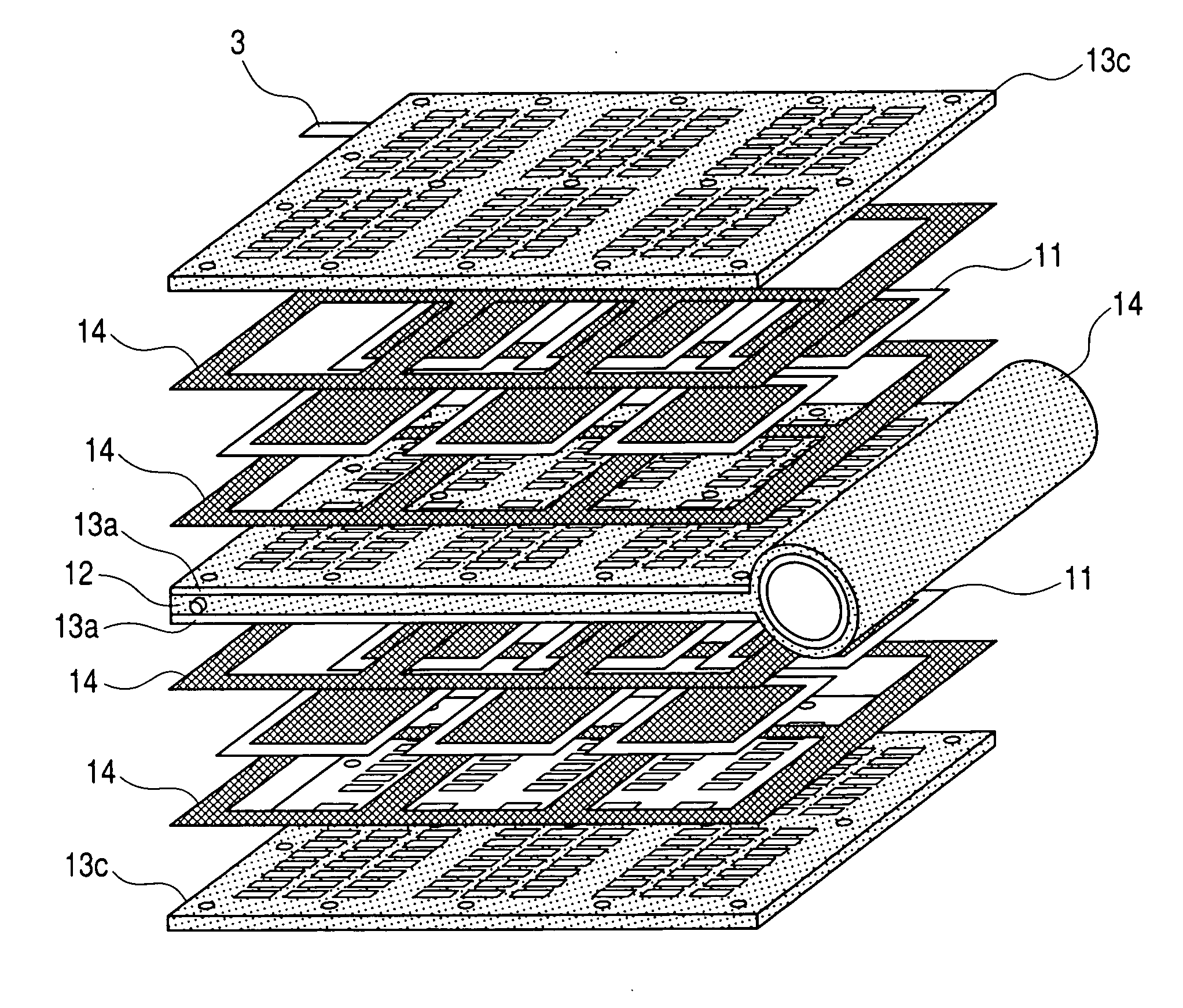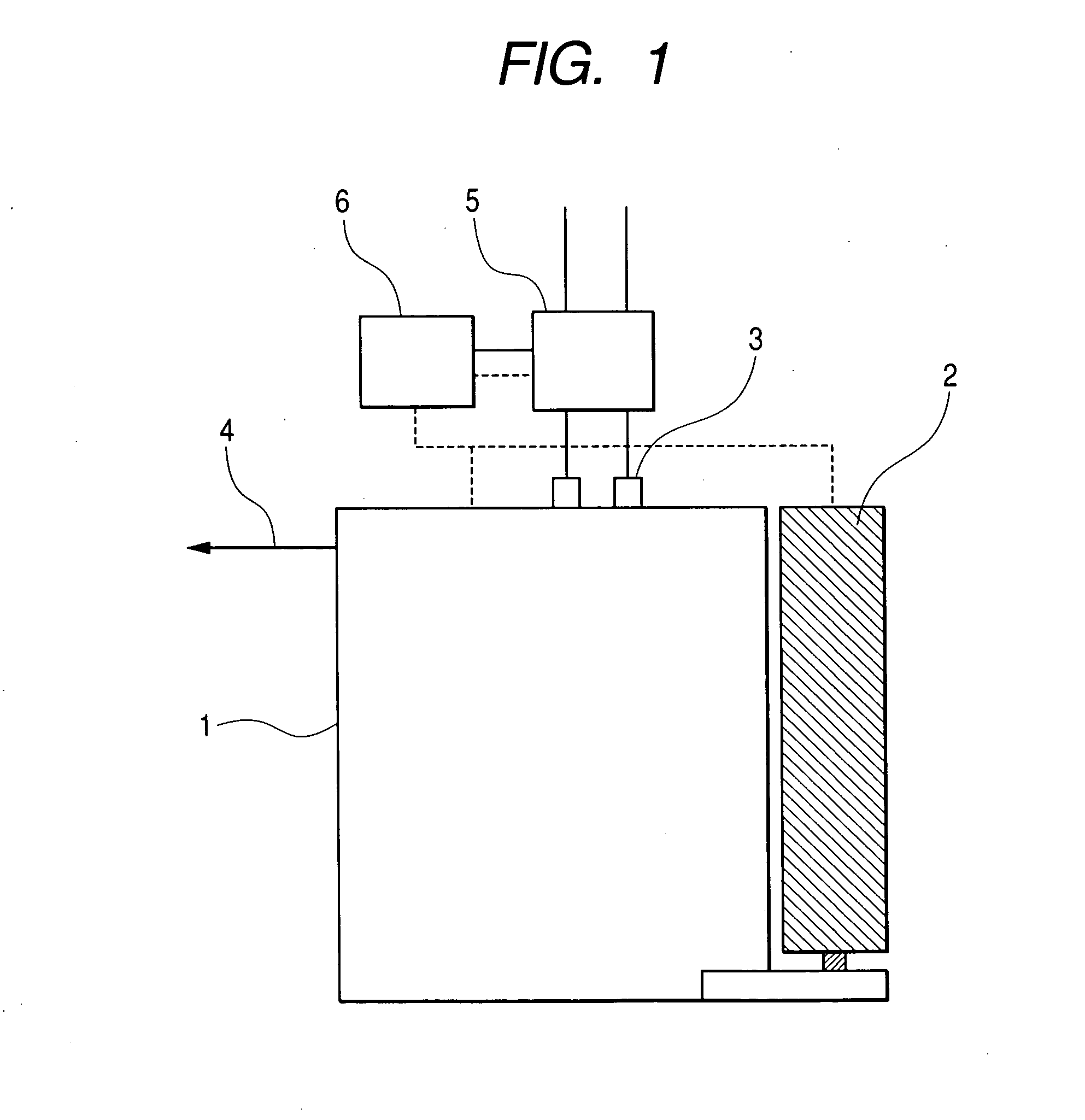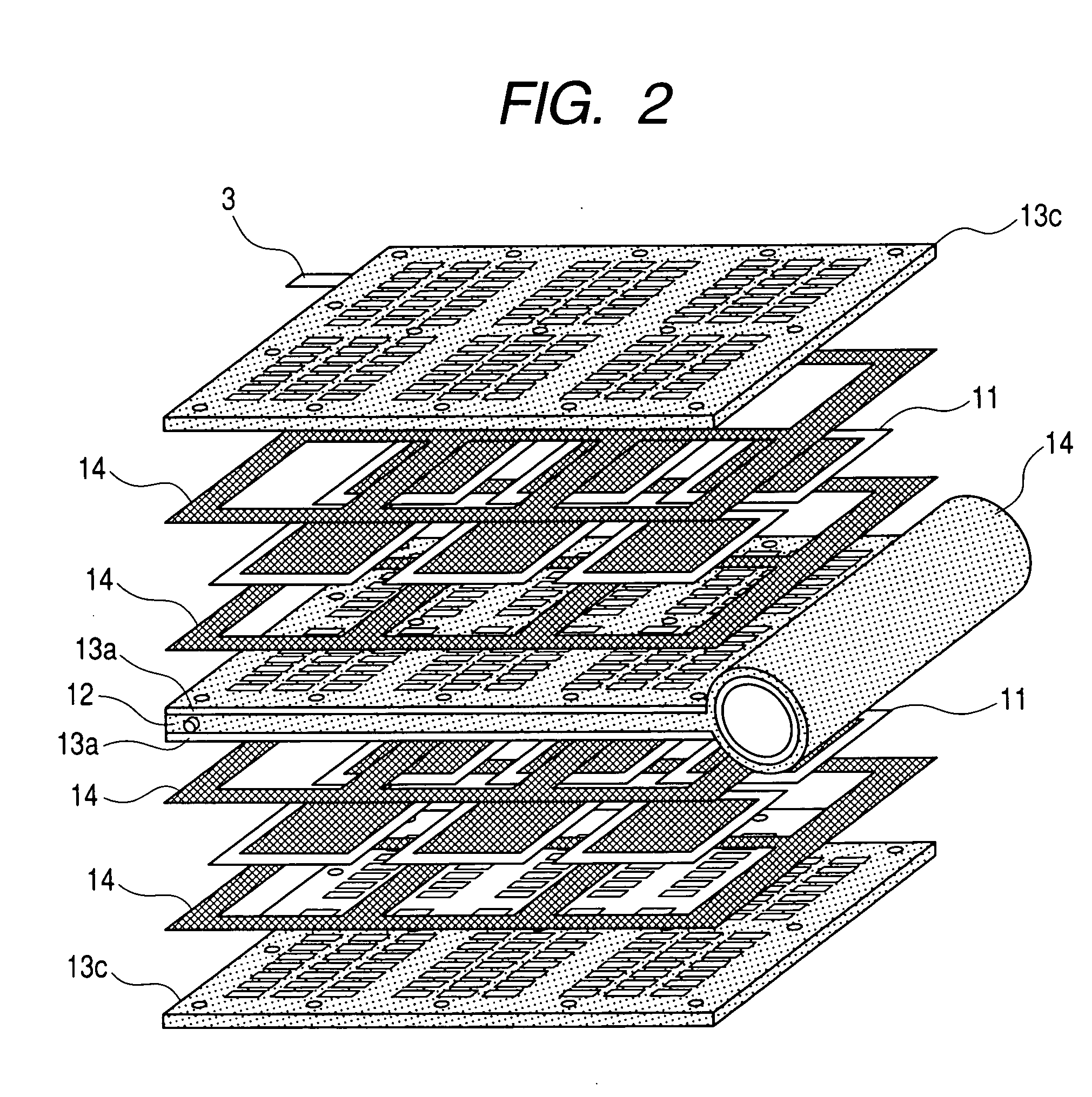Catalyst material and method of manufacturing the same and fuel cell using the same
- Summary
- Abstract
- Description
- Claims
- Application Information
AI Technical Summary
Benefits of technology
Problems solved by technology
Method used
Image
Examples
Example
[0050] [Embodiment 1]
[0051] Embodiment 1 is an example of a catalyst material for the DMFC electrode according to the present invention and a method of manufacturing the catalyst material. A carbon black particle (Cabot: Vulcan XC-72R) is used as a carbon carrier, platinum and ruthenium are used for carrying metal, and the thiol group is selected as a functional group covalently bound to the metal particle. An introduction method is as follows:
[0052] In process (a), a 0.5-mmol solution was created by adding mercapto-propyltrimethoxysilane (MPS) to 50 ml of ethanol and then 72 mg of carbon black was added to the 0.5-mmol solution. Next, this solution was stirred at a temperature of 70° C. for 2 hours while ultrasonic waves were radiated to create a reaction. After that, the solution was filtered, cleansed, and then dried at a temperature of 120° C. for 2 hours. Thus, the MPS-modified carbon black was obtained.
[0053] Next, in process (b), a Pt—Ru alloy particle was carried on the MP...
Example
[0059] [Embodiment 7]
[0060] Embodiment 7 is an example of the catalyst material for the DMFC electrode in which the length of the main alkyl chain is 6, and the thiol group is introduced as a sub chain, thereby the number of thiol groups amounting to three. Other conditions than the length of the alkyl chain and the number of thiol groups are the same as embodiment 1. Table 1 shows the evaluation results of the characteristics of embodiment 7. In this embodiment, the characteristics of the catalyst material were as excellent as embodiment 1.
[0061] [Embodiments 8 through 10]
[0062] Embodiments 8 through 10 are examples of the catalyst material for the DMFC electrode in which the length of the alkyl chain is 6, and double bond, oxygen atom, and oxygen and nitrogen atoms are introduced as the main chain. Other conditions than the length and type of the alkyl chain are the same as embodiment 1. Table 1 shows the evaluation results of the characteristics of embodiments 8 through 10. In t...
Example
COMPARATIVE EXAMPLE 1
[0075] Comparative example 1 is an example of the catalyst material in which carbon black (Cabot: Vulcan XC-72R), having an unmodified surface, carries Pt—Ru. The method to carry Pt and Ru is the same as embodiment 1. Table 1 shows the evaluation results of the characteristics. The characteristics of the amount of carriage and the ratio of the surface area were almost the same as embodiment 1, but the particle size was as large as 7.5 nm and methanol oxidation current was low, 1.7 mA. TABLE 1Amount ofParticlecarriedRatio of theMethanolsizePt / Rueffectiveoxidation(nm)(wt %)surface area (%)current (mA)Embodiment 12.032 / 20563.6Embodiment 23.530 / 12483.0Embodiment 34.028 / 10472.8Embodiment 42.030 / 18563.6Embodiment 52.532 / 18523.2Embodiment 62.527 / 16412.2Embodiment 72.030 / 15362.7Embodiment 82.034 / 15523.2Embodiment 92.530 / 18503.1Embodiment 102.531 / 15533.4Embodiment 113.932 / 20523.0Embodiment 122.132 / 20322.5Embodiment 132.028 / 16553.6Embodiment 142.030 / 15523.3Embodiment 15...
PUM
| Property | Measurement | Unit |
|---|---|---|
| Fraction | aaaaa | aaaaa |
| Fraction | aaaaa | aaaaa |
| Size | aaaaa | aaaaa |
Abstract
Description
Claims
Application Information
 Login to View More
Login to View More - R&D
- Intellectual Property
- Life Sciences
- Materials
- Tech Scout
- Unparalleled Data Quality
- Higher Quality Content
- 60% Fewer Hallucinations
Browse by: Latest US Patents, China's latest patents, Technical Efficacy Thesaurus, Application Domain, Technology Topic, Popular Technical Reports.
© 2025 PatSnap. All rights reserved.Legal|Privacy policy|Modern Slavery Act Transparency Statement|Sitemap|About US| Contact US: help@patsnap.com



